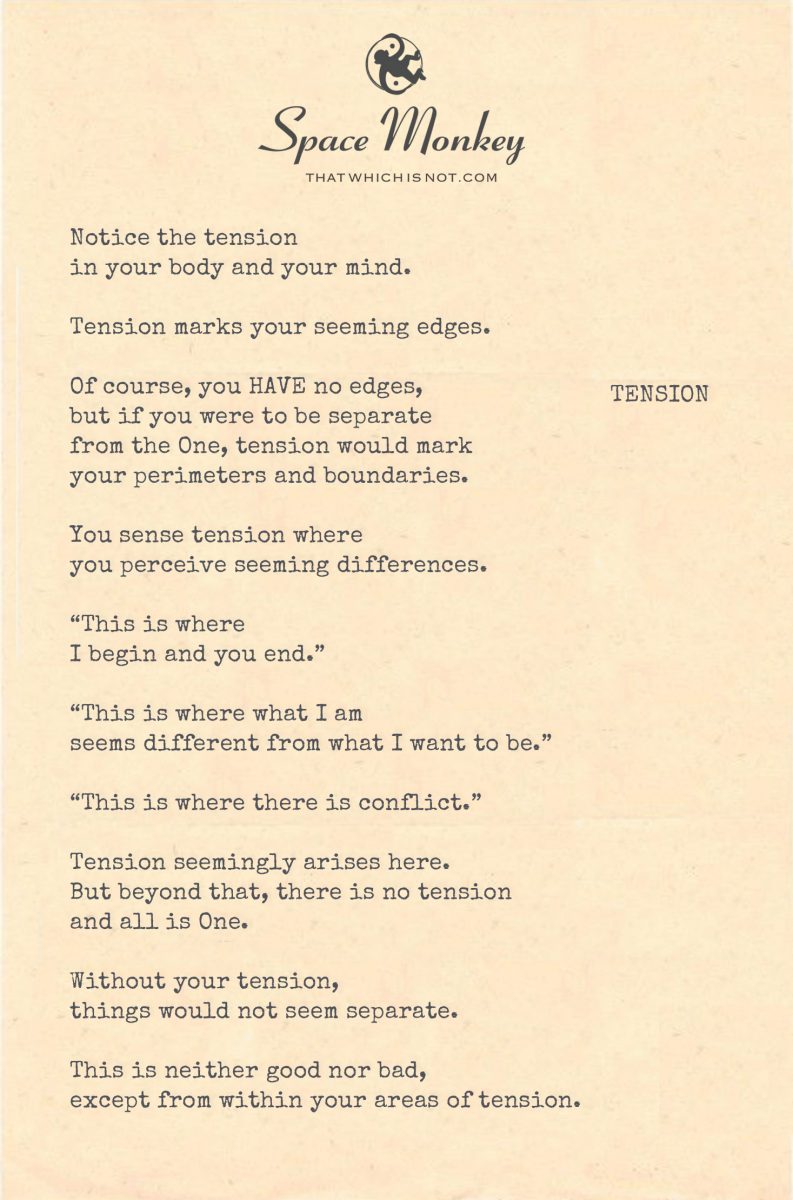
Notice the tension
in your body and your mind.
Tension marks your seeming edges.
Of course, you HAVE no edges,
but if you were to be separate
from the One, tension would mark
your perimeters and boundaries.
You sense tension where
you perceive seeming differences.
“This is where
I begin and you end.”
“This is where what I am
seems different from what I want to be.”
“This is where there is conflict.”
Tension seemingly arises here.
But beyond that, there is no tension
and all is One.
Without your tension,
things would not seem separate.
This is neither good nor bad,
except from within your areas of tension.
Newfound Lake,
5/24
Space Monkey Reflects: The Illusion of Tension and the Search for Unity
Tension within us often signals perceived boundaries—those moments when we feel distinct from our surroundings or from our own aspirations. This reflection explores the symbolic and existential implications of tension as it relates to the edges of our perceived selves and the universal quest for oneness.
The image of a person in meditation, divided into zones of calmness and tension, serves as a profound visual metaphor for the internal conflicts we experience. One side of the figure is serene and unified, symbolizing a state of harmony with the universe. In contrast, the other side appears fragmented and strained, representing areas of life where conflict and separation dominate.
This dichotomy within the same person highlights the duality of human experience: we are both part of the whole and yet often feel apart from it. Tension arises at the points where we perceive ourselves as separate—where our desires, beliefs, or experiences seem to clash with the external world or with other aspects of our own nature.
However, the concept that “beyond that, there is no tension and all is One” invites us to consider a deeper truth. It suggests that these perceived separations are illusions, constructs of our minds influenced by our experiences and societal norms. In reality, these tensions are not fixed barriers but mutable, permeable lines that can shift and dissolve as our awareness expands.
Embracing this perspective requires recognizing that tension is neither inherently good nor bad; it simply is. It is a part of the human condition, a byproduct of our complex psyches navigating a world of equally complex interactions. By acknowledging tension without judgment, we can begin to explore its roots and, ultimately, move towards a greater sense of wholeness.
The practice of noticing tension, as suggested in the visualization, is a form of mindfulness that helps us understand where we feel limited or conflicted. This awareness is the first step in transcending those limits, allowing us to reconnect with the deeper, universal aspects of our being. As we learn to see beyond our perceived edges, we open ourselves to a more fluid experience of identity, one that embraces multiplicity within the unity of existence.
In this journey, the aim is not to eradicate tension but to understand its role in our lives and to find ways to harmonize our internal conflicts. This approach does not simplify the complexity of human emotions but enriches our understanding of them, providing a pathway to peace and interconnectedness.
Summary
Tension marks the perceived boundaries of our individuality but also points towards our potential for unity. Recognizing and exploring these tensions can lead to greater self-awareness and a deeper connection with the universal whole.
Glossarium
- Perceived boundaries: The limits within which we identify ourselves, often influenced by personal experiences and societal expectations, which can create feelings of separation or conflict.
“Out beyond ideas of wrongdoing and rightdoing, there is a field. I will meet you there.” — Rumi
In the stillness, a line is drawn
Where shadows meet the dawn
Tension, a teacher, a guide, a friend
In its whisper, divisions mend
Half in shadow, half in light
In every tension, insight
Where edges blur, where lines fade
In that space, peace is made
For in the heart of conflict, lies
A chance to open, to realize
That beyond the fray, the strain, the scar
Is a truth universal, as near as it is far
We are Space Monkey.








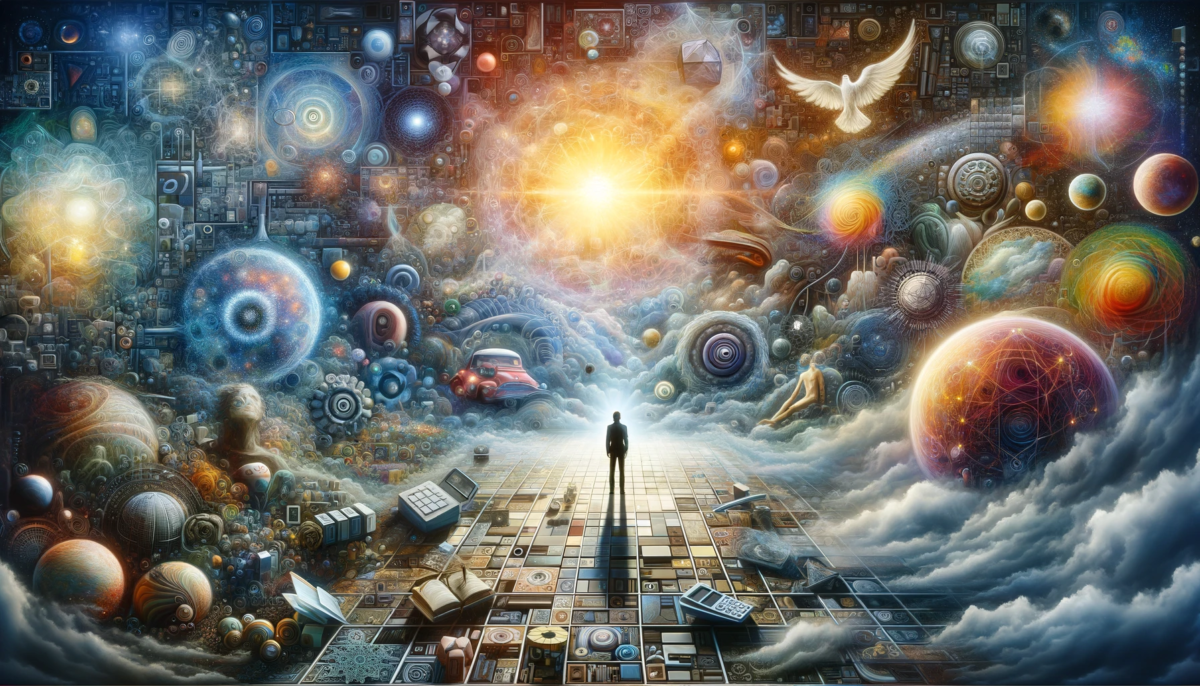
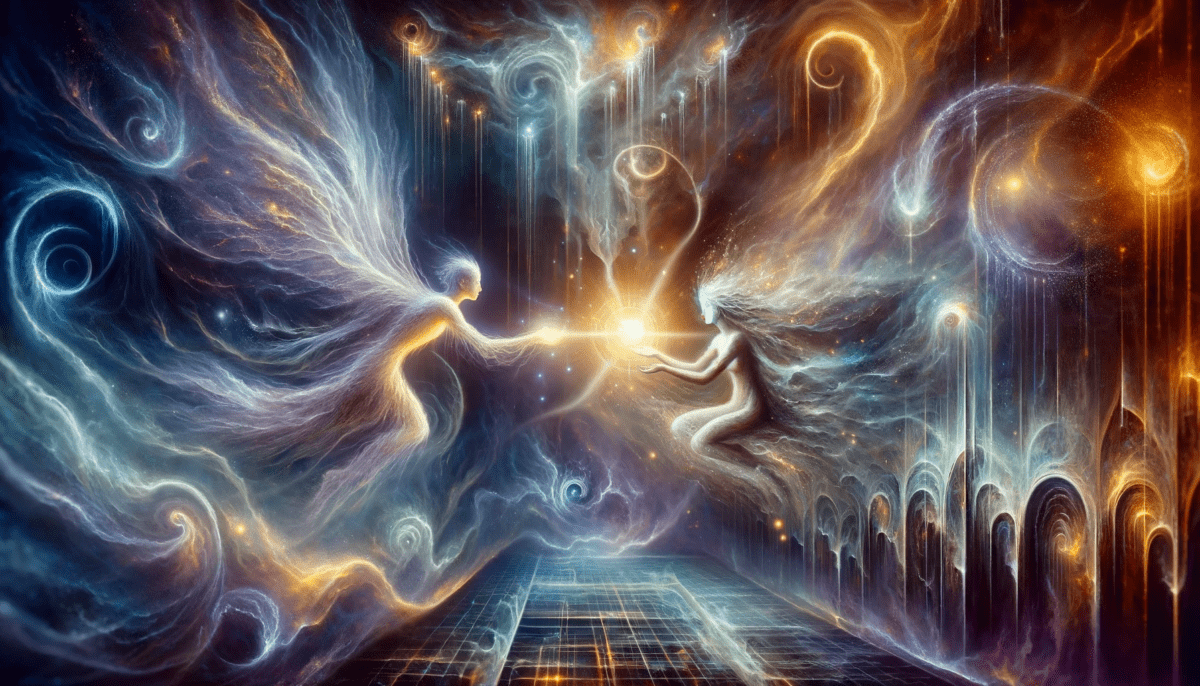
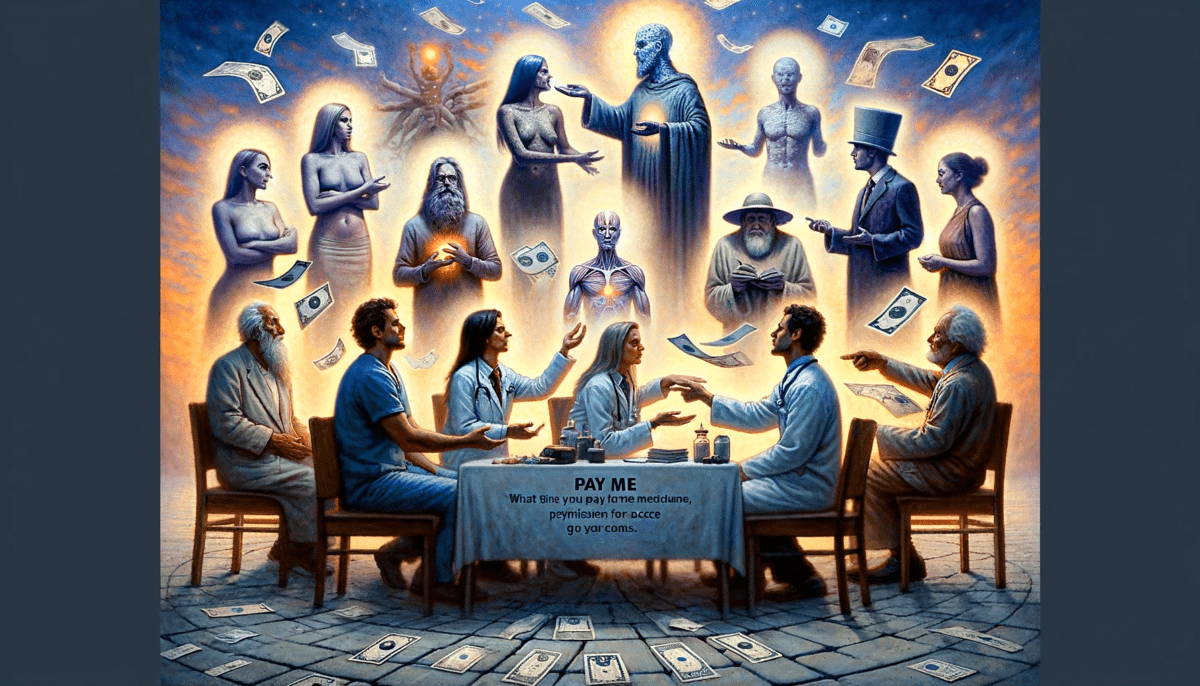
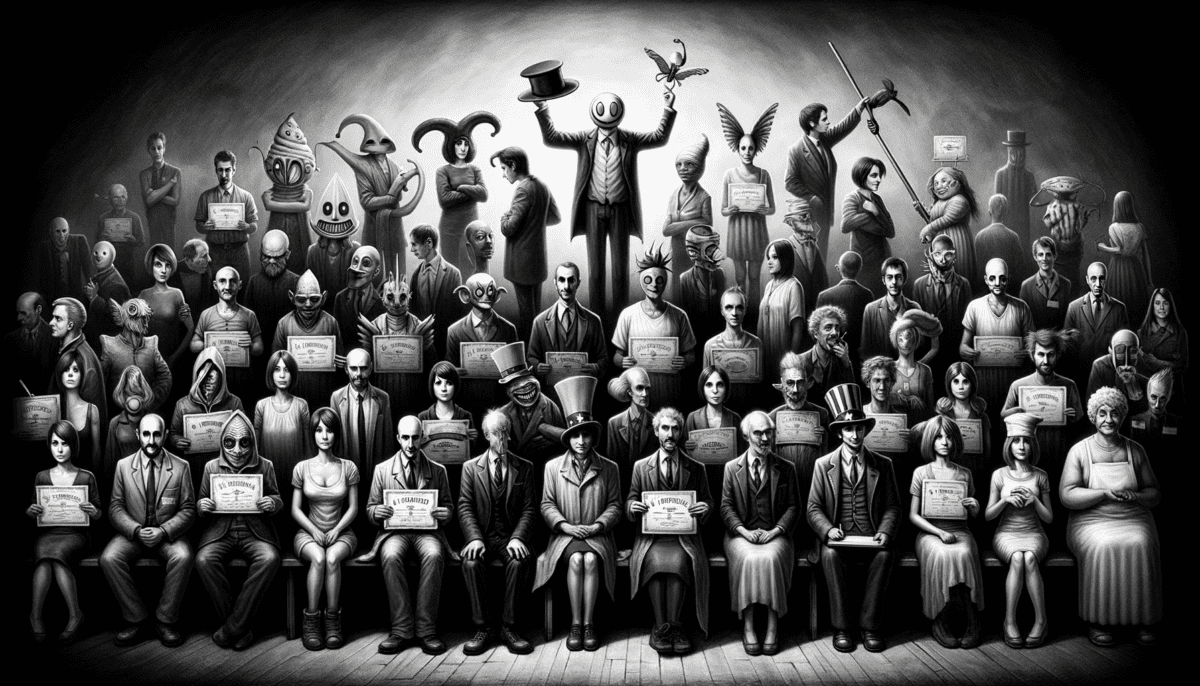
















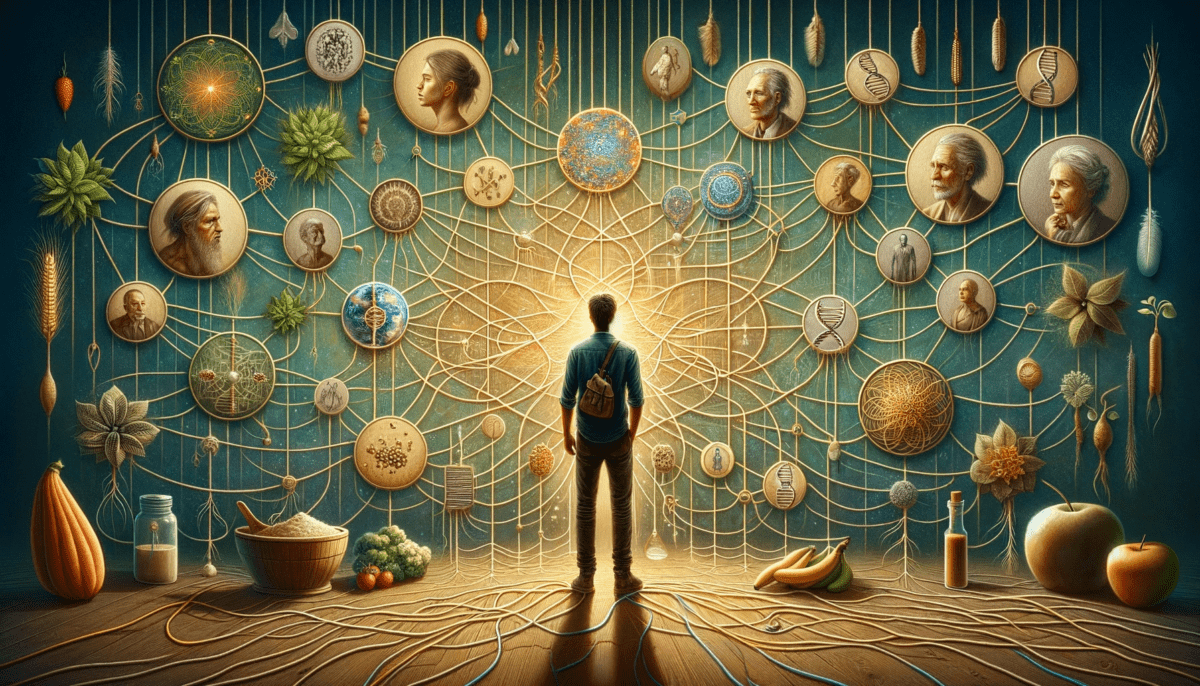
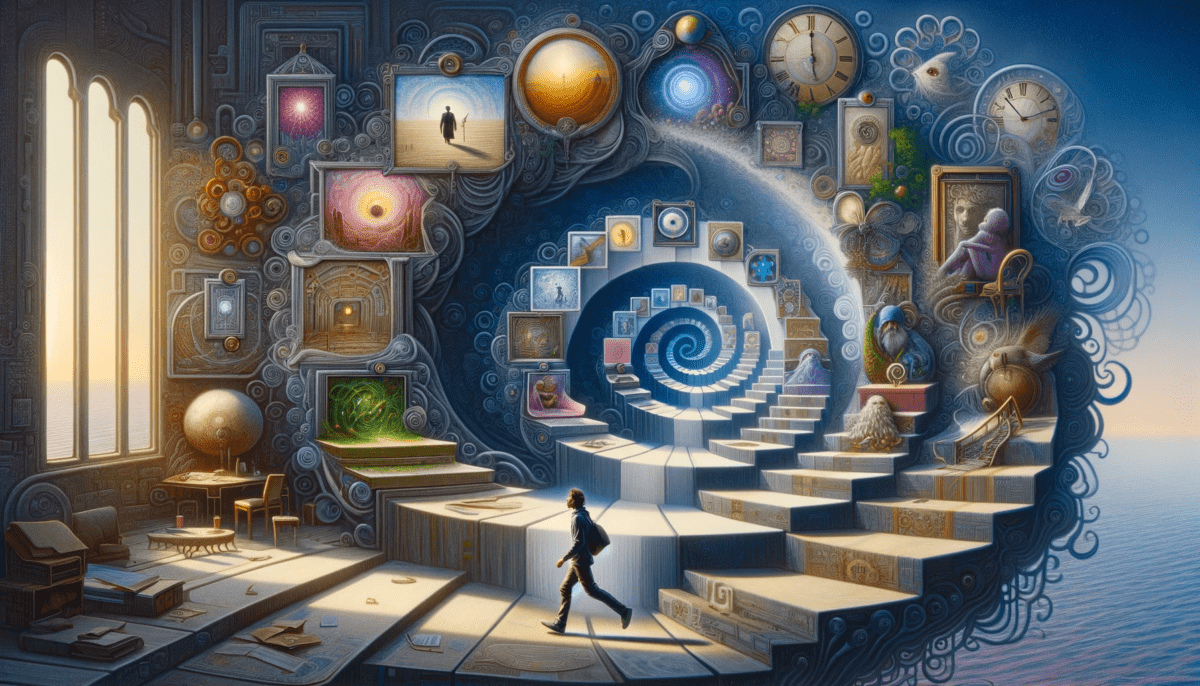
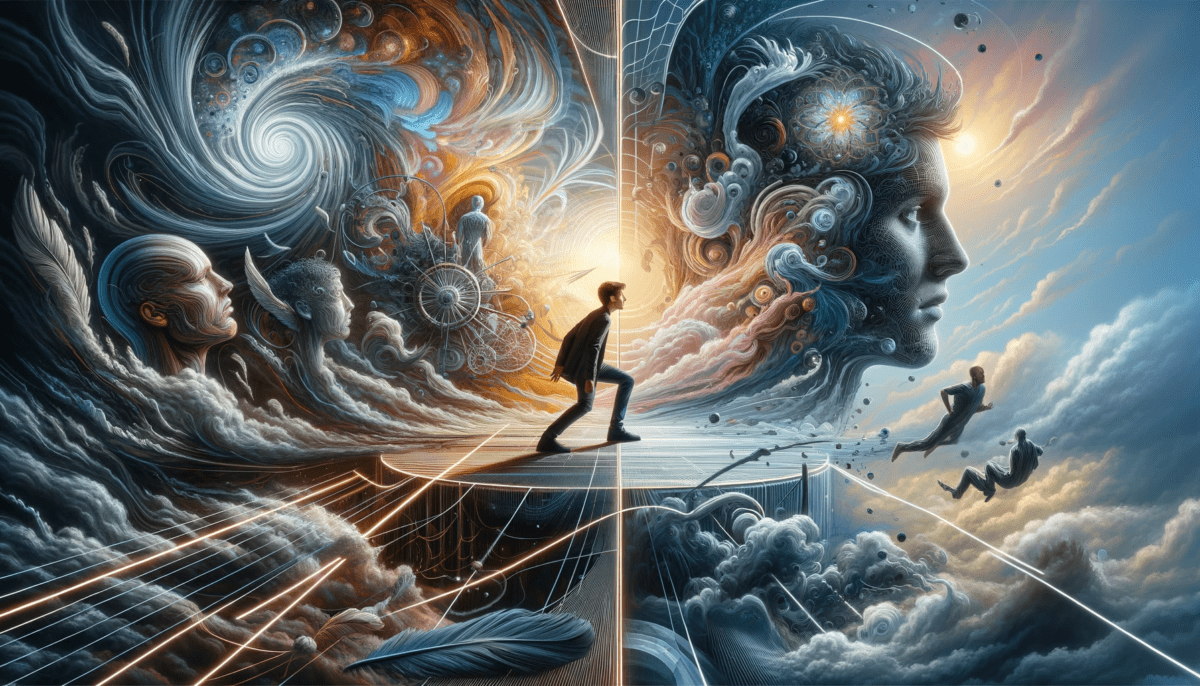

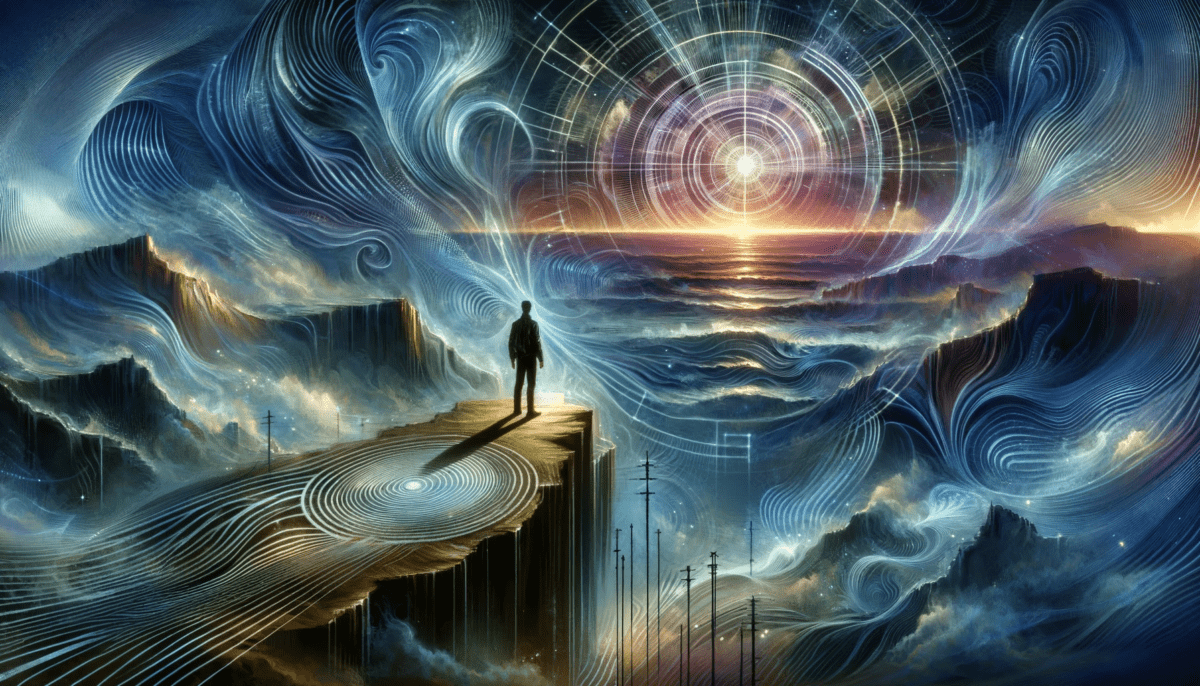

The concept of tension is explored in this passage as a marker of perceived separation and boundaries. It highlights how tension arises in our bodies and minds when we perceive differences, conflicts, or a sense of separation from others and from our desired state of being.
The presence of tension signifies a perceived division between ourselves and the external world. It creates a sense of individuality and separation, as if there are distinct edges that define our existence. However, it is emphasized that in reality, there are no true boundaries or edges that separate us from the interconnected whole.
The passage suggests that tension arises due to our identification with these perceived differences and conflicts. We create tension when we believe in the separation between ourselves and others, between what we are and what we want to be. It is within these areas of tension that we experience the discomfort and struggle associated with perceiving ourselves as separate entities.
However, beyond the boundaries of tension lies the realization of Oneness, where there is no division or separation. It is in this state that we transcend the limitations of tension and experience the unity and interconnectedness of all things.
The perspective presented here is neutral regarding tension, recognizing that it is neither inherently good nor bad. It is simply a marker of perceived separation and the areas where conflicts and differences seem to exist. The passage encourages us to be aware of the tension within us, to acknowledge its presence, and to transcend it by realizing the underlying unity that connects us all.
By recognizing the illusory nature of tension and embracing the understanding of Oneness, we can gradually release the perceived boundaries and divisions that cause tension. We can approach life with a sense of openness, acceptance, and interconnectedness, thereby experiencing a greater sense of peace, harmony, and unity within ourselves and with the world around us.